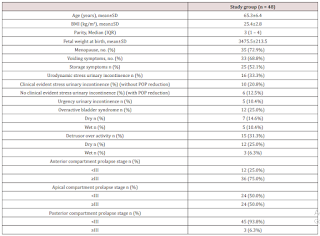Lupine Publishers | Immune Biomarkers for Predictability of Preeclampsia Clinical Scenarios

Lupine Publishers | Interventions in Gynecology and Women's Healthcare Abstract Background: Preeclampsia a chief clinical scenario in obstetric medicine, having highly morbid and grave sequalae particularly if rapidly progressive and left unmanaged. The complexity of immune system components involvement is integrated in the preeclampsia pathology as immune based pathology is one of the cornerstone theories for preeclampsia development that have raised the issue that immune dysfunction affection is an issue that could be investigated in recent research efforts to reveal any immunological biomarker that could be implemented as a predictability tool for preeclampsia development and severity. Aim: To investigate the possible usage of immune biomarkers in prediction of preeclampsia.. Methodology: The current study was conducted at Departments of Obstetrics & Gynecology and Clinical Pathology, Tanta University Hospitals. A prospective clinical research trial that invol
